Weather API Example
Create an application that displays today's weather and tomorrow's forecast for a city using OpenWeather APIs.
Contact us if you would like to get access this application to your account.
Connect to the Current Weather API
Create a free account on OpenWeather
OpenWeather offers different APIs to get weather data from a location. First, we will look at the Current Weather API to get the weather of the day.
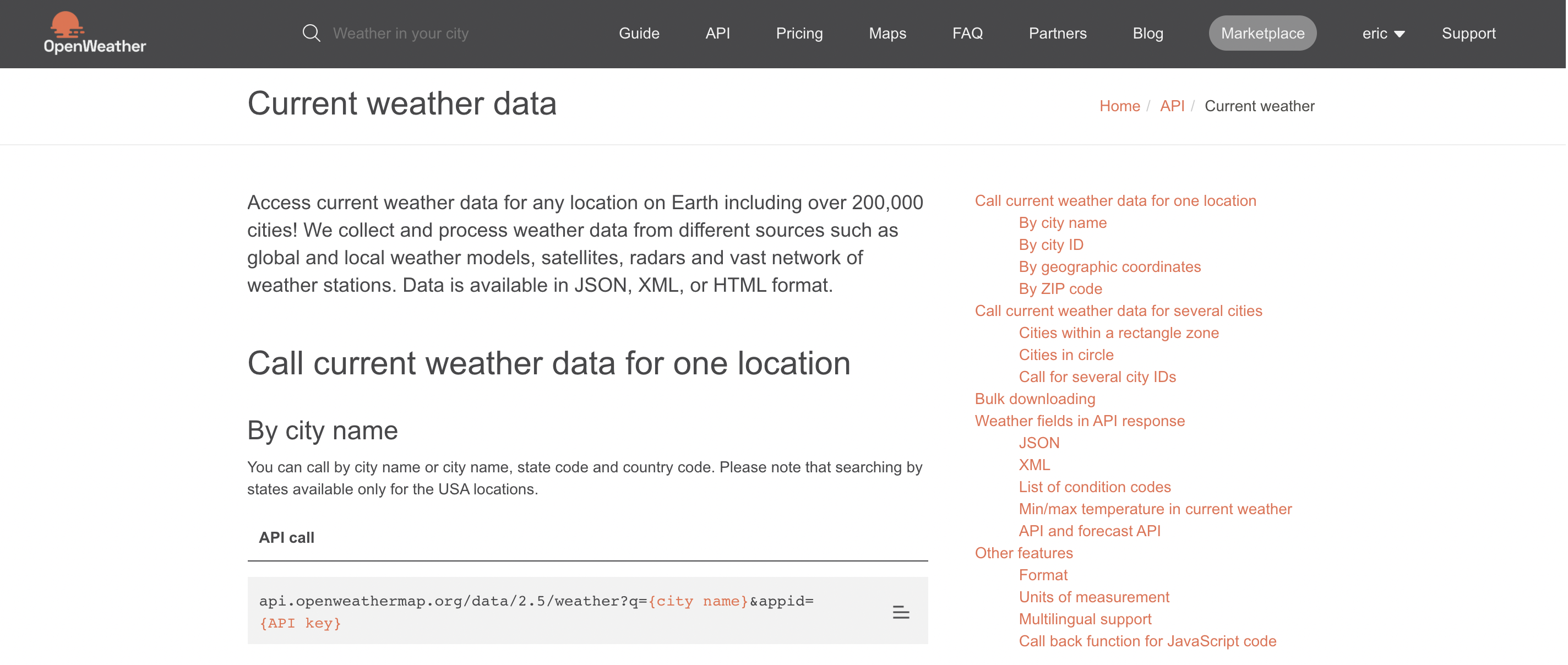
https://[api.openweathermap.org/data/2.5/weather?q={city name}&appid={API key}
https://[api.openweathermap.org/data/2.5/weather
OpenWeather also provides you with Query strings that allow you to assign values to parameters in your API query: city (q), app ID (appid), unit of measure (units) and language (lang).
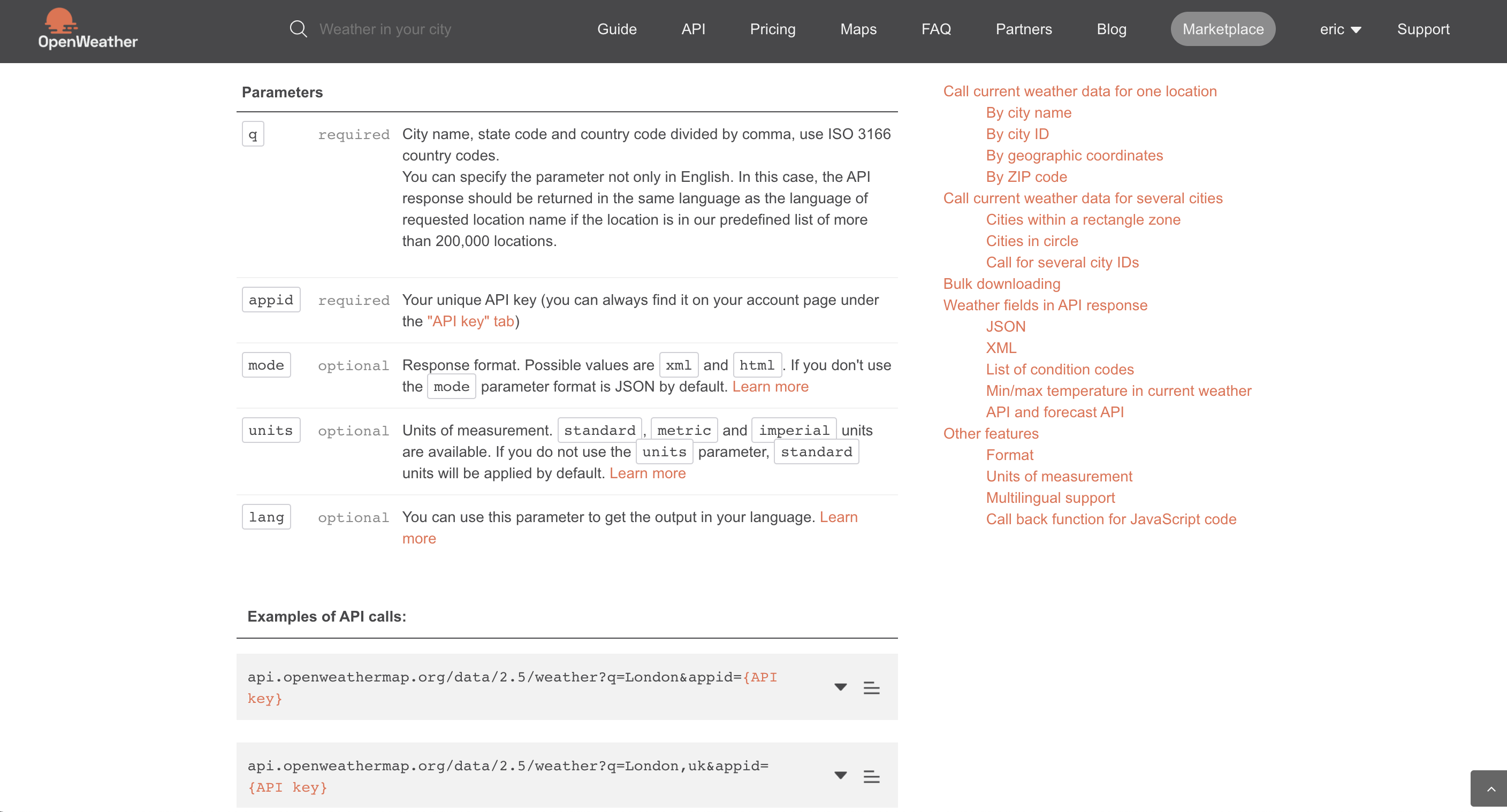

Add these settings in the HTTP Component Properties window. For our example we choose the French language (lang = fr) and the city of Paris (q = Paris,fr).
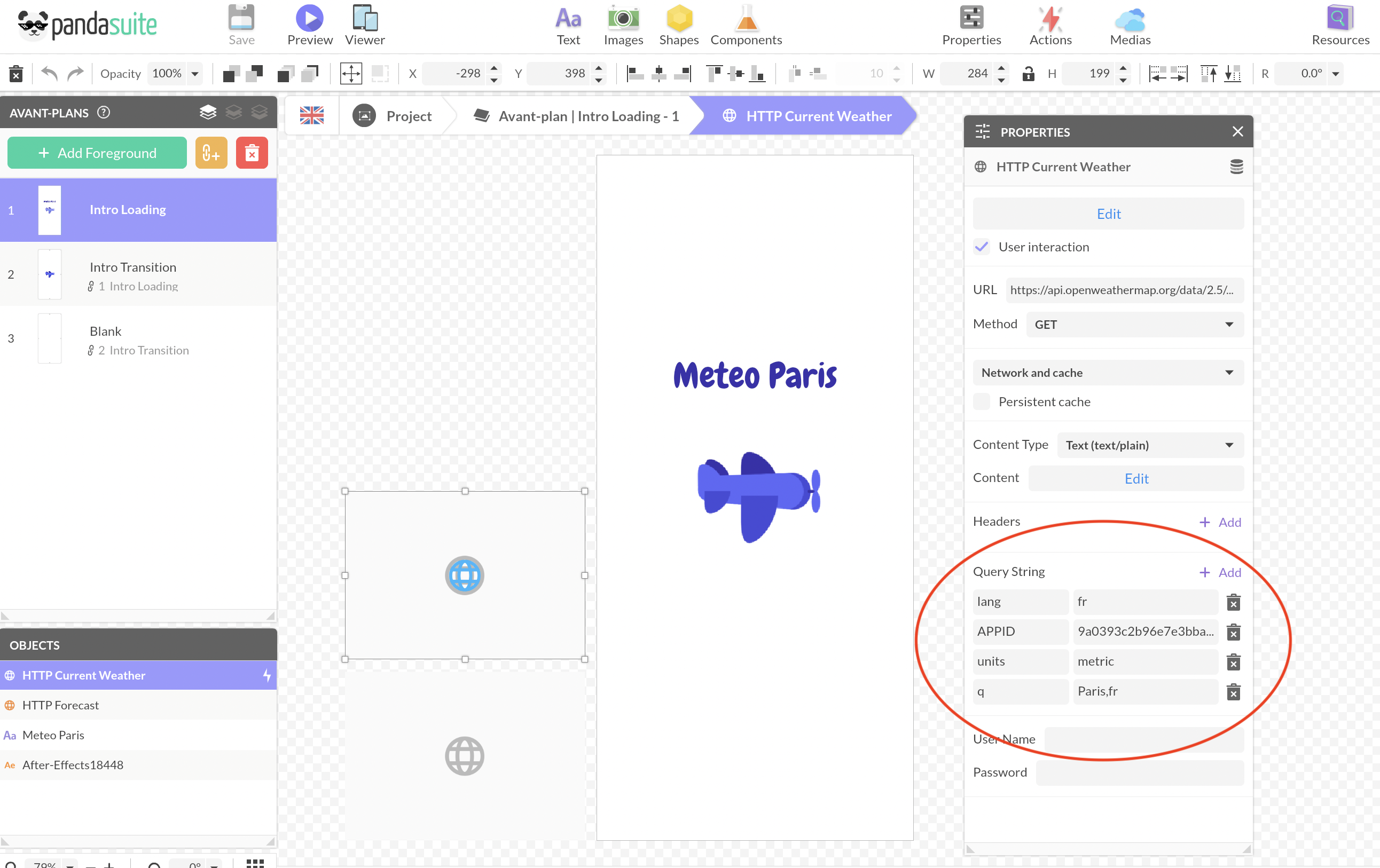
Test the connection to the API
{
"coord": {
"lon": -122.08,
"lat": 37.39
},
"weather": [
{
"id": 800,
"main": "Clear",
"description": "clear sky",
"icon": "01d"
}
],
"base": "stations",
"main": {
"temp": 282.55,
"feels_like": 281.86,
"temp_min": 280.37,
"temp_max": 284.26,
"pressure": 1023,
"humidity": 100
},
"visibility": 16093,
"wind": {
"speed": 1.5,
"deg": 350
},
"clouds": {
"all": 1
},
"dt": 1560350645,
"sys": {
"type": 1,
"id": 5122,
"message": 0.0139,
"country": "US",
"sunrise": 1560343627,
"sunset": 1560396563
},
"timezone": -25200,
"id": 420006353,
"name": "Mountain View",
"cod": 200
}
It allows you to better understand the data structure and to formalize the right formulas.
Récupérer l'identifiant
HTTP -> 5f903e615ccbd73fda000453
5f903e615ccbd73fda000453 is the identifier of this component.
Start request
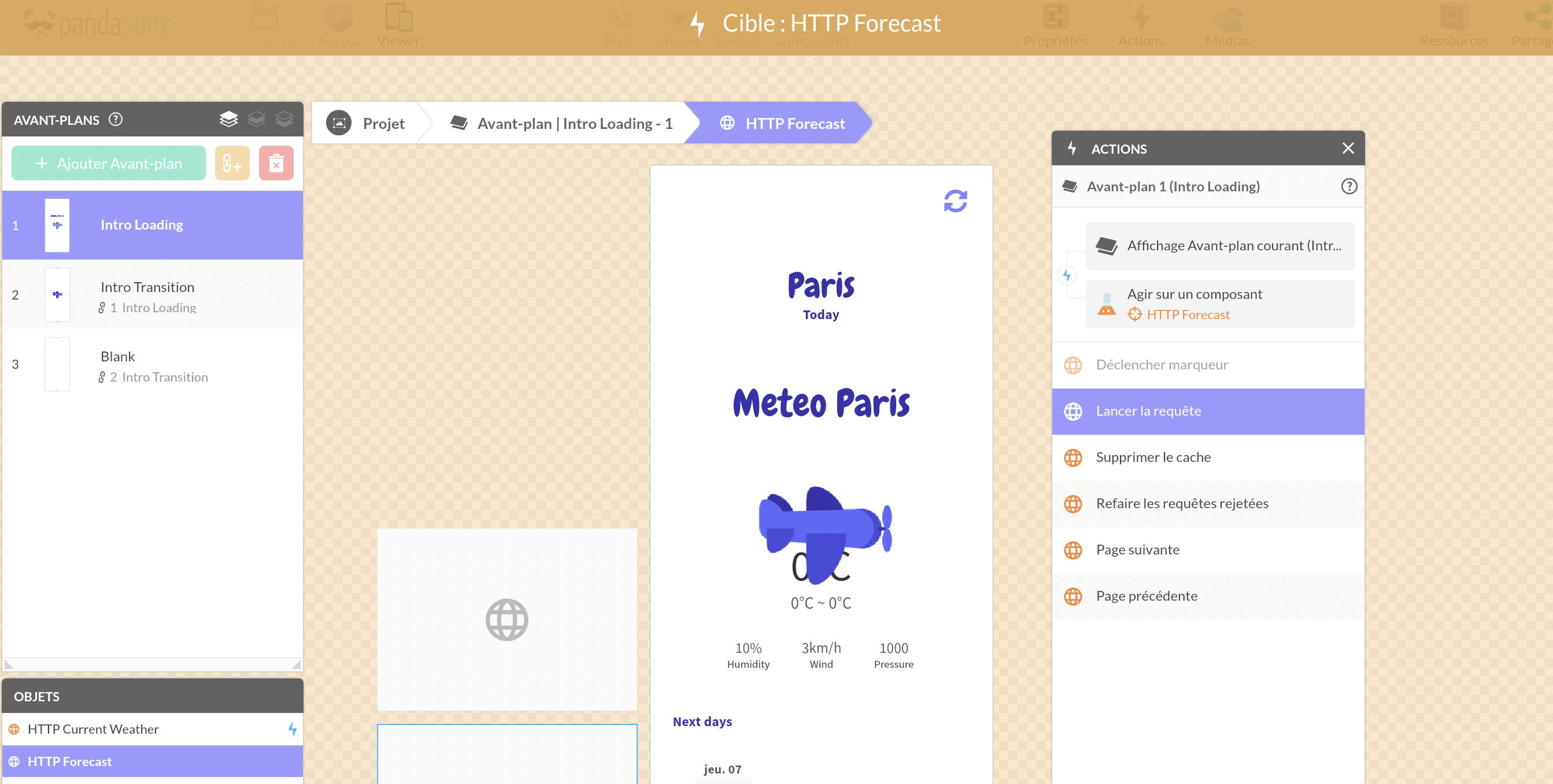
Connect the data
Display the temperature of the day

Copy and paste this formula:
data:5ff6e0e1a1914461d600062a(/main/temp/@formatNumber:maximumFractionDigits|2)]°C
main/temp is the way to access the temperature value
@formatNumber allows you to display a number naturally depending on the language of the project.
To learn more about the functions, read this tutorial.
Display the weather of the day (using Conditions)

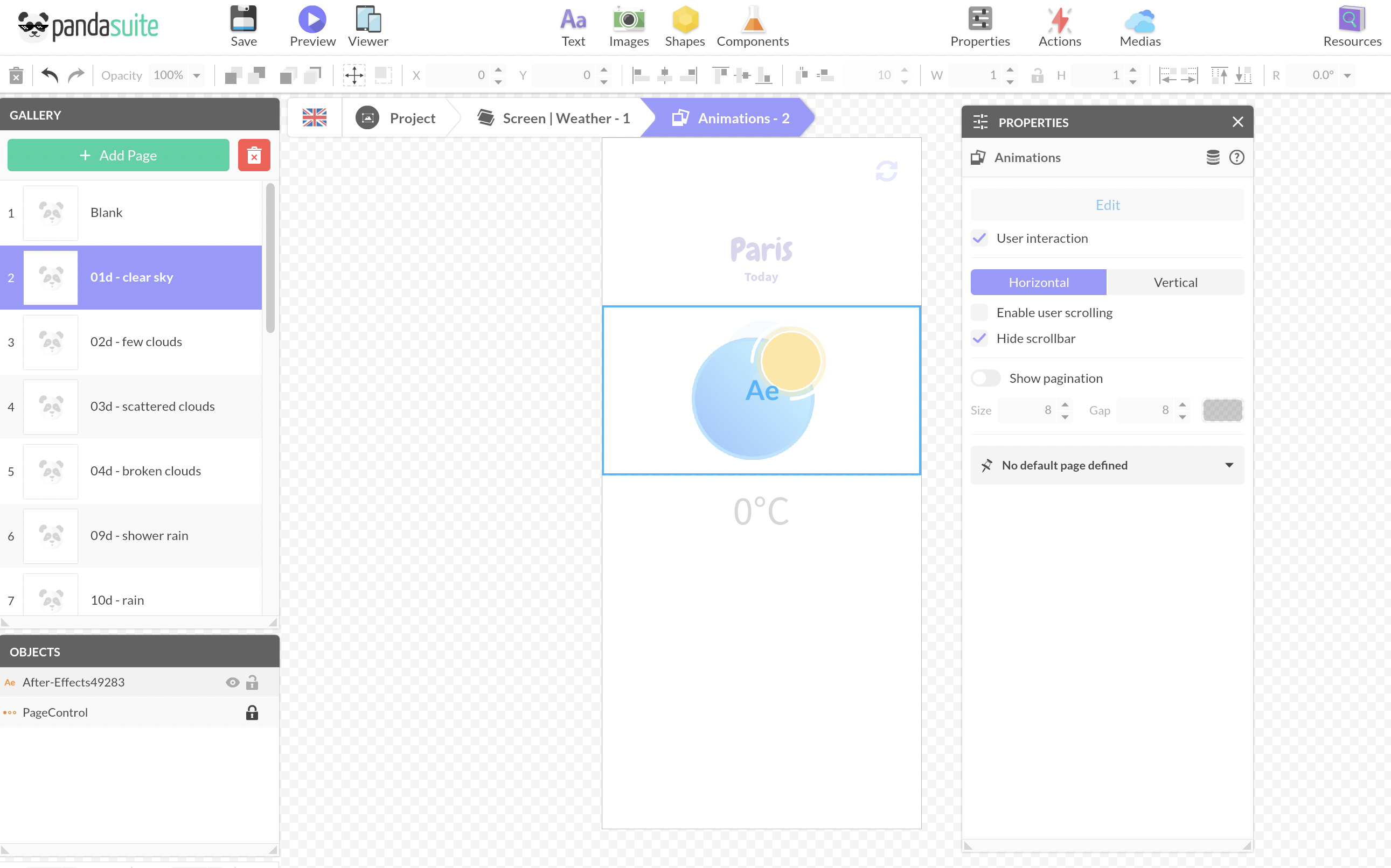
Data: [data:5ff6e0e1a1914461d600062a(/weather/0/icon)] Function: Equal to Value: 01d

Select the Conditions component and create the action at the Evaluation (01d) trigger > Interact with a component > Gallery > Go to selected page (01d) .
Display weather forecast (collection)
Connect to the Daily Forecast API
https://api.openweathermap.org/data/2.5/forecast/daily
from the OpenWeather technical documentation:

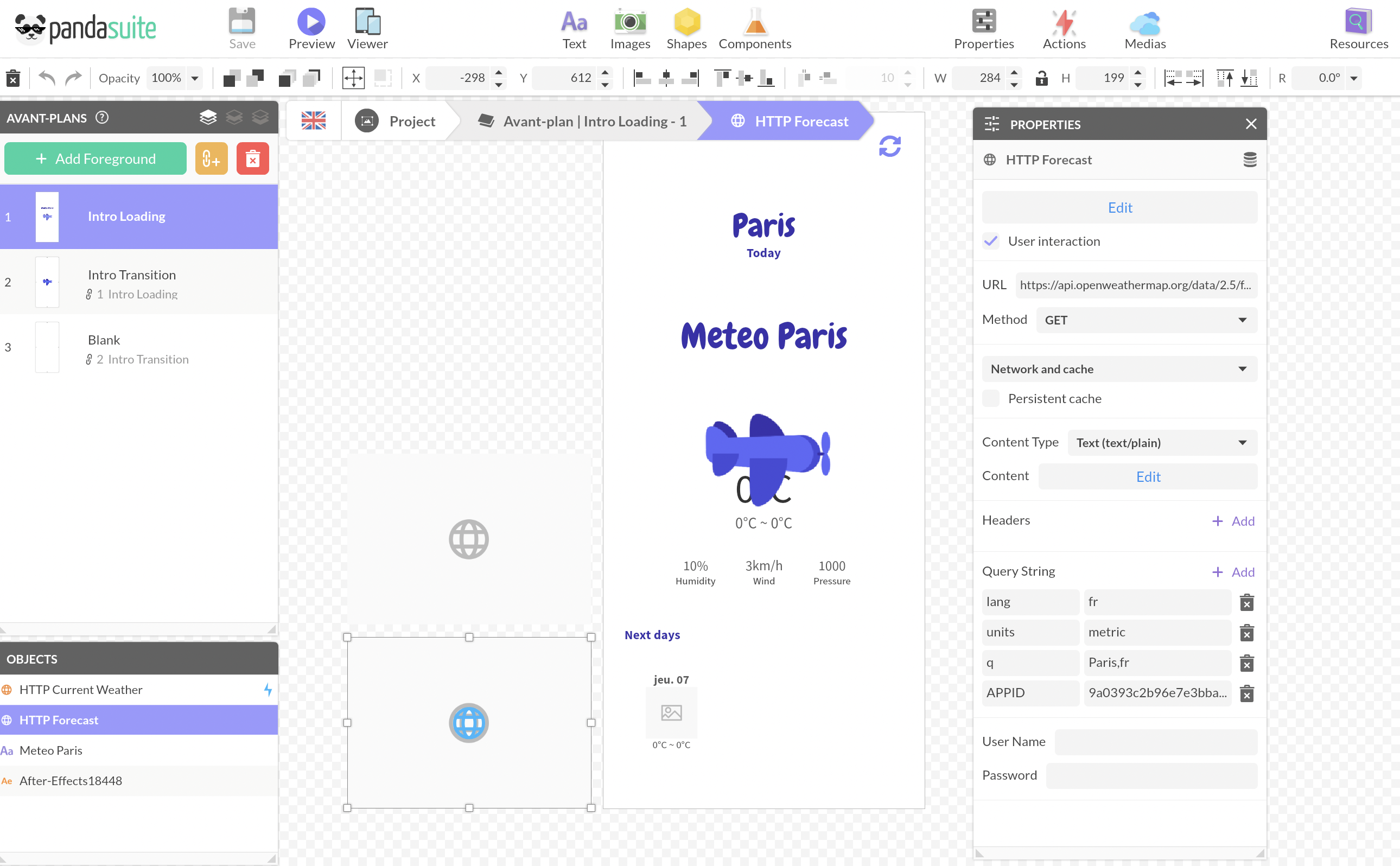
Test the connection to the API
{
"city":{
"id":2643743,
"name":"London",
"coord":{
"lon":-0.1258,
"lat":51.5085
},
"country":"GB",
"population":0,
"timezone":3600
},
"cod":"200",
"message":0.7809187,
"cnt":7,
"list":[
{
"dt":1568977200,
"sunrise":1568958164,
"sunset":1569002733,
"temp":{
"day":293.79,
"min":288.85,
"max":294.47,
"night":288.85,
"eve":290.44,
"morn":293.79
},
"feels_like":{
"day":278.87,
"night":282.73,
"eve":281.92,
"morn":278.87
},
"pressure":1025.04,
"humidity":42,
"weather":[
{
"id":800,
"main":"Clear",
"description":"sky is clear",
"icon":"01d"
}
],
"speed":4.66,
"deg":102,
"clouds":0,
"pop":0.24
},
....
Get the identifier
HTTP -> 5ff6fe50a1914461d60007e3
5ff6fe50a1914461d60007e3 is the identifier of this second component.
Create a collection for weather forecasts
[data:5ff6fe50a1914461d60007e3(/list)]
list is the way to access all results

Copy and paste the following formula where 5ff6e0e1a1914461d600062a is the identifier of your HTTP component:
[data:5ff6fe50a1914461d60007e3(/list/@getByIndex:[data:(rowIndex)]/dt/@multiply:1000/@formatDate:dateStyle|medium)]
To learn more about the functions, read this tutorial.